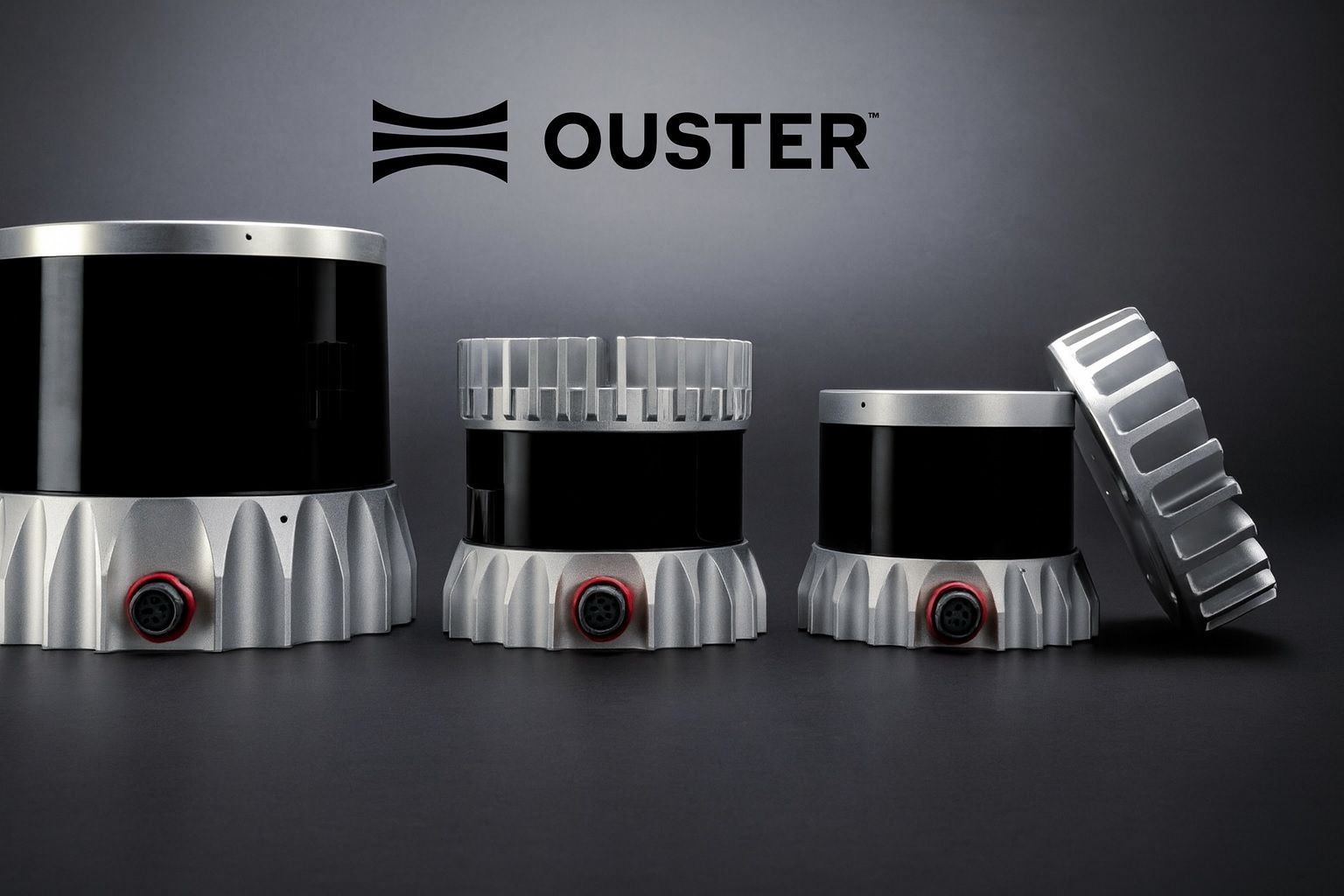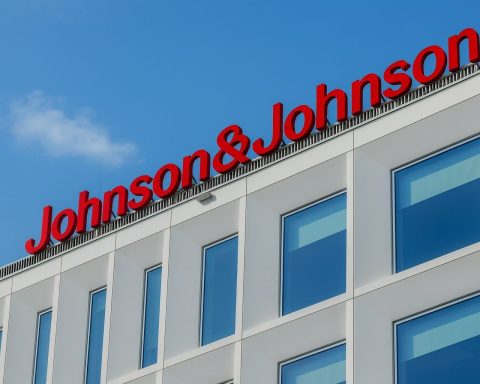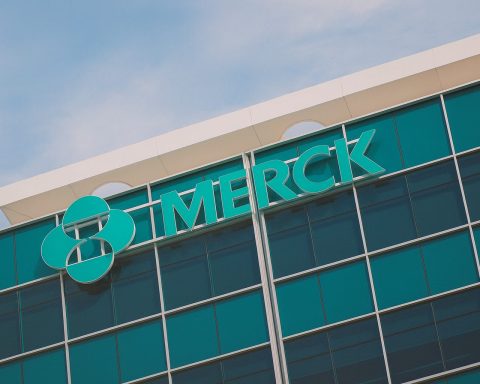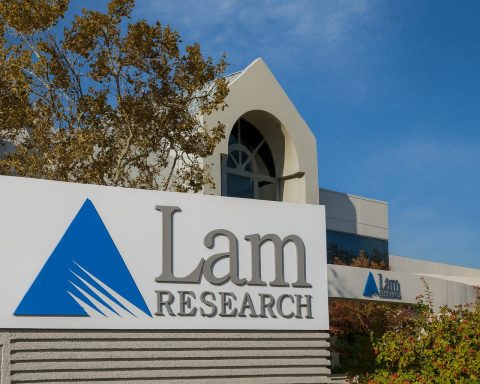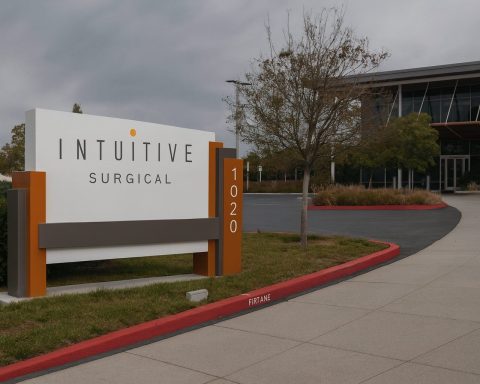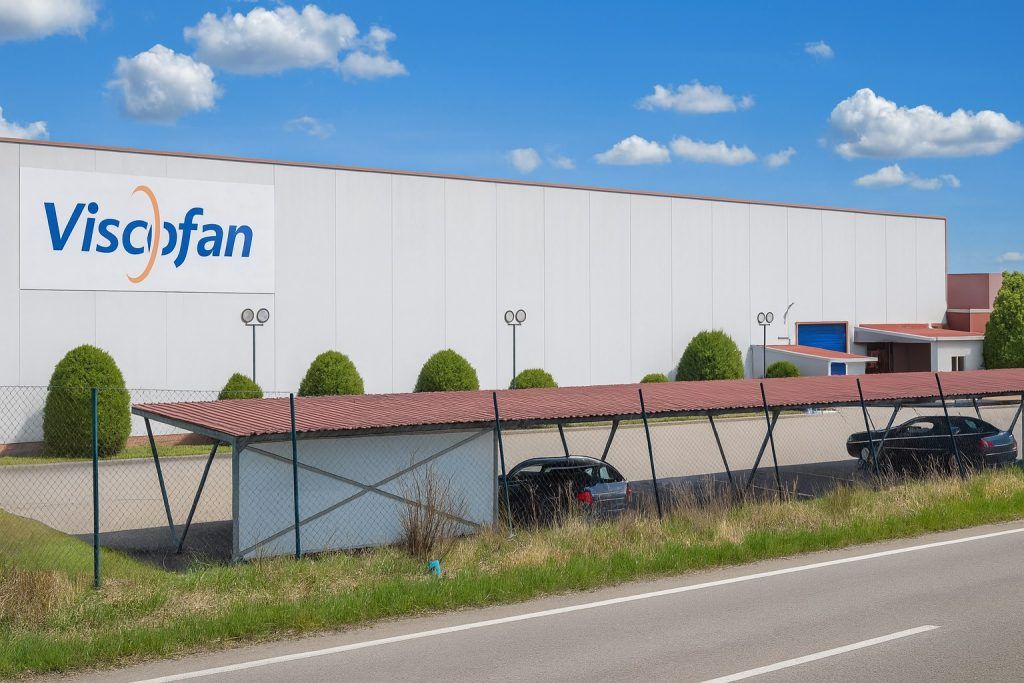- Massive Rally: Ouster (NASDAQ: OUST) shares have surged to around $36 – a 52-week high – after climbing over 470% from their yearly low of $6.34 [1], vastly outperforming the broader market.
- Deals Drive Demand: The LiDAR sensor maker’s stock jumped double-digits in recent days amid strong sales and strategic deals – including a new defense security partnership and a Fortune 500 retail rollout – signaling rising demand for its technology [2].
- Analyst Optimism & Caution: Wall Street is upbeat yet cautious. Cantor Fitzgerald calls Ouster “fundamentally best-positioned” in the LiDAR industry [3] thanks to superior revenue and margins, but notes the stock now trades above fair value after its big rally [4].
- Key Milestones: Major developments – such as Ouster’s partnership with security firm Constellis to integrate its AI-driven LiDAR into defense systems – have bolstered investor confidence [5]. The company is also heading into its Q3 earnings report on November 4, 2025 [6], keeping traders on alert.
- Bright Outlook, Volatile Ride: Experts see growth ahead in autonomous vehicles and smart infrastructure fueling Ouster’s long-term prospects, though fierce competition and high volatility (beta ~2.7) could make for a bumpy ride [7].
Stock Soars to 52-Week High on Strong Momentum
Ouster’s stock has been on a tear, recently hitting an intraday high of about $36.30 per share – a new 52-week peak [8]. As of yesterday’s close, OUST was up roughly 473% from its 52-week low of $6.34 [9], an almost fivefold increase in just a year. By comparison, the S&P 500 index has risen only around 9% year-to-date [10]. This highlights Ouster’s dramatic outperformance versus the broader market. In fact, Ouster’s stock has climbed about 339% over the last 12 months, including an astounding 340% surge in just the past six months [11]. The result: shares are now at multi-year highs, especially after a recent streak of gains.
Momentum accelerated in the past few trading sessions. Just this Tuesday, the stock spiked double-digits in a single day, helping propel OUST to these new highs [12]. Trading volumes have been brisk, and market enthusiasm is clearly running hot. However, volatility is also elevated – Ouster’s beta is around 2.7, meaning it swings much more than the average stock [13]. Sharp moves up (or down) have been common, so investors are cautioned that this high-flyer can be volatile. The stock’s 50-day moving average is now in the high-$20s [14], far below the current price, reflecting how quickly the rally accelerated. All told, Ouster’s market capitalization has ballooned to roughly $2.1 billion at the latest prices [15], marking a remarkable rise but still making it a relatively small-cap company by market standards.
What’s Fueling the Rally?
Several catalysts have coalesced to drive Ouster’s remarkable run-up. Strong financial results have been a fundamental driver. In the second quarter of 2025, Ouster reported revenue of $35.05 million, exceeding analyst forecasts of about $33.6 million [16]. This represented roughly 30% year-over-year sales growth, indicating accelerating demand for the company’s digital LiDAR sensors. Gross margins have also improved significantly (GAAP gross margin hit ~45% in Q2, up over 10 percentage points from a year prior [17]), showing that Ouster is gaining efficiency as it scales production. While the company did post a net loss (Q2 net loss was around $21M, or an EPS of –$0.38 vs –$0.29 expected) [18], investors have largely shrugged off the earnings miss and focused on the top-line beat and margin gains. The stronger sales and improving metrics painted a picture of a firm rapidly growing into its expenses – a narrative that has energized bulls.
Just as importantly, Ouster’s operational milestones and partnerships have stoked optimism. In mid-September, the company announced a strategic partnership with Constellis, a major security and defense contractor, to integrate Ouster’s Gemini lidar and “Physical AI” software into Constellis’s next-gen security platform [19] [20]. This collaboration will deploy Ouster’s digital LiDAR sensors and real-time AI perception software to enhance threat detection and situational awareness for defense and critical infrastructure [21]. The deal showcases Ouster expanding beyond self-driving cars into security and defense – a new market for its technology. Executives from both firms touted the partnership’s significance, with Constellis’s CEO saying it will “enhance advanced security operations” by fusing LiDAR with other sensors [22]. News of this tie-up validated Ouster’s tech in a demanding new arena and boosted investor confidence.
Around the same time, a Fortune 500 technology retailer (left unnamed due to confidentiality) moved from a pilot into a full global rollout of Ouster’s sensors, deploying them across 500+ retail stores in 24 countries [23]. Analysts called this a “major commercial rollout” that underscores growing commercial trust in Ouster’s LiDAR at scale [24]. It’s a concrete sign that LiDAR adoption is expanding beyond small trials into large, real-world deployments – giving investors a compelling growth story. Ouster also notched a win in the smart infrastructure arena: its BlueCity traffic management system (combining 3D lidar and AI) is being expanded to over 100 intersections in Utah through a state contract [25], and overall Ouster’s lidar traffic tech now covers 400+ intersections worldwide [26]. These deployments in smart cities show the technology’s versatility in improving road safety and traffic flow.
Earlier in the year, Ouster scored a huge credibility boost in the government sector. Its flagship OS1 sensor became the first high-resolution LiDAR ever approved by the U.S. Department of Defense for use on unmanned drones [27]. One analyst dubbed it a “big-time win with the DoD,” which sent OUST shares soaring ~27% when announced [28]. This Defense Department certification is a unique competitive differentiator – Cantor Fitzgerald noted that rivals are likely at least a year behind in getting similar clearance [29]. The DoD’s green light potentially opens the door for Ouster’s tech to be used in defense and aerospace projects, a niche but potentially lucrative market.
Ouster has also broadened its reach across industrial and automotive applications. In May, it inked a multimillion-dollar supply deal with Komatsu, the Japanese heavy equipment giant, to provide 3D lidar sensors for Komatsu’s autonomous mining trucks and machinery [30]. By upgrading from legacy 2D sensors to Ouster’s 3D LiDAR units, Komatsu aims to enhance the vision and safety of self-driving mining vehicles. And in the automotive realm, Ouster reported that revenue from autonomous vehicle programs jumped and became its second-largest vertical in Q2 [31] – a promising sign that self-driving car makers are increasingly adopting Ouster’s sensors. All these wins across defense, retail, industry, traffic, and vehicles illustrate how Ouster’s technology is not just about one field like driverless cars; it’s enabling automation in many domains (warehouses, robots, drones, city intersections, mines, etc.), which diversifies the company’s opportunities and revenue streams [32] [33].
In short, Ouster’s rally has been fueled by a virtuous cycle of strong execution and expanding use-cases. Beating revenue forecasts and landing high-profile deals gave the stock positive momentum, which in turn attracted more investor attention. That allowed Ouster to raise fresh capital when its stock was higher (the company has over $220M in cash on hand after past fundraising [34]), ensuring it can keep investing in growth. The excitement has fed on itself – but now the key question is how much of this good news is already priced into the stock.
Analysts Upbeat but Cautious
The breathtaking rally in OUST has drawn plenty of attention – and some mixed reactions – from market analysts. Many on Wall Street are bullish on Ouster’s fundamentals and long-term potential, yet even the bulls urge some caution after the stock’s meteoric rise.
Notably, investment bank Cantor Fitzgerald recently raised its price target on Ouster to $30 (up from $19) following the strong Q2 results and Ouster’s flurry of business wins [35]. Cantor’s analysts praised Ouster as “fundamentally the best-positioned” company in the LiDAR space [36], noting it generates higher revenue and better margins than many peers. They highlighted Ouster’s healthy ~42% gross margin and ~26% revenue growth rate [37], as well as its impressive operational scale – over 113,000 LiDAR sensors shipped to date (including about 5,500 in Q2 alone) [38]. These factors underpin Cantor’s confidence in Ouster’s competitive edge. Yet tellingly, Cantor maintained a “Neutral” rating on the stock despite boosting the target price [39]. Why the caution on a stock that’s been booming? In the firm’s view, Ouster’s valuation had begun to look stretched. By mid-August, shares had more than doubled year-to-date and were “trading above fair value,” according to Cantor’s models [40]. Fast forward to mid-October, and OUST is now well above that $30 target, near $36 – meaning any further near-term upside might be limited unless new information justifies a higher valuation.
Other analysts have offered a range of price targets for Ouster, reflecting both the company’s promise and the uncertainty in this emerging sector. The consensus 12-month target among analysts is around $35–36 per share [41], essentially where the stock is now. Reported targets span from roughly $30 on the low end up to as high as $50 [42] for the most optimistic scenarios. For instance, data from TipRanks (which compiles analyst forecasts) shows an average around $35 with a $50 high estimate [43]. This implies that while some bulls see more room for growth – nearly 40% upside in the most bullish case – many experts believe Ouster’s current price already factors in much of its foreseeable progress. One recent analysis argued that Ouster’s AI and LiDAR advantages might be “already priced in,” cautioning that after such a run-up the stock had become “categorically expensive” relative to fundamentals [44].
It’s also worth noting that company insiders have taken advantage of the rally to lock in some profits. CEO Angus Pacala and other executives sold chunks of OUST stock in September when it was trading in the high-$20s [45]. Pacala, for example, trimmed about 3.6% of his holdings around $28 per share [46]. Such insider selling doesn’t necessarily signal a problem – executives often sell for personal financial planning. And insiders still hold roughly 5–6% of Ouster’s shares [47], showing they remain heavily invested. But the sales do suggest management felt the stock’s rapid rise provided a reasonable opportunity to realize some gains. It’s a reminder that even those closest to the company see the stock’s volatility and are mindful of balancing risk and reward.
Meanwhile, some market commentators have grown upbeat on Ouster as the company proves itself. For example, CNBC host Jim Cramer recently highlighted Ouster as a likely winner among speculative tech stocks. After a technical pullback in September, Cramer noted that one chart expert saw a “terrific buying opportunity” in OUST around the low-$30s, observing heavy buying volume even as the stock dipped [48] [49]. Cramer pointed out that Ouster had delivered a very strong quarter and “of course, the stock is definitely not cheap” given its volatility [50]. Nonetheless, he cited the technician’s view that if Ouster can reclaim its old highs in the mid-$30s, it could “run all the way to $45, maybe $50 by early next year.” [51] In his words, “Ouster’s likely to remain a winner” in this environment of investor enthusiasm for speculative tech [52]. While one should take such TV commentary with a grain of salt, it underscores the buzz that Ouster has generated beyond just Wall Street analysts.
The takeaway from analysts and experts: Ouster is impressing, but expectations are now sky-high. The company’s execution has earned praise, yet its stock valuation leaves little room for error. Ouster will need to keep delivering strong growth – and ideally chart a path toward profitability – to justify further gains from here. Any stumble or sign of slowing momentum could prompt a pullback, given how far and fast the stock has climbed.
LiDAR Industry Trends and Competition
Ouster’s fortunes are closely tied to the broader LiDAR boom underway. LiDAR – which stands for Light Detection and Ranging – is a technology that uses laser pulses to create precise 3D maps of the environment. These laser eyes allow machines like autonomous cars, robots, and drones to “see” and navigate the world around them. After a few rocky years of hype and consolidation, the LiDAR sector is now gaining real commercial momentum, as evidenced by Ouster’s recent deals and those of its rivals. The market opportunity for advanced lidar sensors is vast and growing across multiple industries.
Importantly, Ouster itself grew in stature by consolidating the industry – it merged with former competitor Velodyne in 2023, uniting two leading LiDAR makers under the Ouster name [53]. This merger eliminated a key rival and greatly expanded Ouster’s product portfolio (bringing together spinning lidar units from Velodyne with Ouster’s digital solid-state sensors), while also achieving greater economies of scale. The combined company emerged as one of the best-capitalized Western LiDAR specialists at a time when competition from China is heating up [54]. In particular, Chinese LiDAR manufacturers like Hesai have been fiercely competing globally, backed by significant funding and the large Chinese auto market [55]. This competitive backdrop means Ouster cannot rest easy; it must keep investing in innovation to maintain its edge. The company has been doing so by advancing its Gemini AI software platform and BlueCity traffic systems, among other offerings, to provide more integrated solutions than competitors [56]. Analysts caution that intensifying competition – whether from agile Chinese upstarts or big automotive suppliers developing their own sensing tech – remains a risk factor for Ouster’s growth story [57]. Even with Ouster’s current lead in some areas, the race to capture the LiDAR market is far from settled.
The use-cases for LiDAR are broadening, which lifts the outlook for all players in the field. Beyond just self-driving cars (which major automakers and tech companies continue to develop, albeit on longer timelines), there is surging interest in using 3D sensors for industrial automation, warehouse robots, delivery drones, security systems, and smart city infrastructure. Ouster’s recent wins – from mining trucks to retail stores to city intersections – exemplify how LiDAR is being adopted in diverse settings. One analysis pegged the “smart infrastructure” segment of the LiDAR market alone at around $19 billion in coming years [58], underlining the sizable opportunity as cities and enterprises upgrade to sensor-driven systems. For instance, more transportation departments are looking to intelligent traffic solutions (like Ouster’s BlueCity) to improve road safety and efficiency [59]. Likewise, retailers and warehouses are exploring LiDAR for automation and analytics, and defense agencies are integrating it for enhanced surveillance. This expanding addressable market gives Ouster a chance to grow on multiple fronts, provided it can execute and fend off rivals.
To capitalize on the trend, Ouster has positioned itself not just as a hardware vendor but as a provider of full-stack “Physical AI” solutions [60]. The company uses the term “Physical AI” to describe the fusion of advanced sensors (like its LiDAR units) with artificial intelligence software that interprets the data in real time. By offering both the lidar hardware and the perception software – such as its new Gemini AI platform for sensor fusion, and the BlueCity analytics suite – Ouster aims to deliver end-to-end solutions that make it easier for customers to deploy lidar at scale [61]. This approach could deepen Ouster’s competitive moat, potentially creating recurring software and services revenue on top of one-time sensor sales. It also aligns with a key industry trend: customers prefer turnkey solutions that provide actionable insights, rather than just raw sensor data. Ouster’s strategy of bundling hardware with AI analytics may give it an edge as it vies with other LiDAR makers and with big-tech companies dabbling in machine vision.
Still, Ouster will have to continually prove its technology in the field to stay ahead. LiDAR as an industry has gone through hype cycles before – some smaller peers went public via SPACs in recent years only to struggle afterward. By merging with Velodyne and focusing on real deployments, Ouster has tried to distinguish itself as a survivor and leader of the pack. Its challenge now is to turn early deployments into widespread adoption while managing competition and costs. The next couple of years could be critical in determining which LiDAR companies emerge dominant and which fall by the wayside.
Outlook and Stock Forecast
Looking ahead, expectations are high for Ouster’s future performance, but so are the demands. In the near term, all eyes are on the company’s upcoming earnings and guidance. Ouster will report its third quarter 2025 results on November 4, 2025 after market close [62], giving investors the latest read on its growth trajectory. The company has guided for Q3 revenue of $35–38 million, which would mark continued solid growth from last year [63]. Hitting the upper end of that range would also top Q2’s revenue. If Ouster meets or beats these targets – and shows progress on narrowing its losses – it could further bolster the bull case and perhaps justify the stock’s recent strength. Conversely, if results disappoint or executives sound a note of caution about 2026, the stock could see a reality check given its lofty valuation. In essence, the Q3 earnings call will be a crucial moment to gauge whether Ouster’s fundamentals are catching up with its stock price.
Over the long term, many analysts and industry models project robust growth for Ouster, albeit from a relatively small current base. According to one forecast, Ouster could reach about $335.6 million in annual revenue by 2028, along with roughly $30 million in net profit by that year [64]. For context, Ouster’s revenue over the past 12 months is around $100 million and it remains unprofitable (net loss ~$92M) at present [65]. Hitting those 2028 targets would require roughly a 39% compound annual growth rate in sales over the next few years – a rapid clip, but not impossible if LiDAR adoption truly accelerates. Based on those growth assumptions, the models suggest Ouster’s fair value might be around $35 per share [66]. Interestingly, that is roughly where the stock is trading now, implying the market has already “priced in” a scenario of high growth through the end of the decade and eventual profitability. To exceed today’s valuation in the long run, Ouster may need to outperform those current growth forecasts (or investors will need to ascribe a higher multiple due to strategic value).
It’s worth emphasizing that predictions on OUST vary widely – reflecting both the high promise and high uncertainty in the LiDAR sector. In fact, valuation estimates for the stock (from various analysts and models) range from as low as around $5 per share to over $40+ per share [67]. That huge spread highlights how differently people view Ouster’s risks and opportunities. Bulls argue that if Ouster cements itself as a top sensor supplier for autonomous vehicles or smart cities, the upside could be enormous – especially given that some peers were once valued in the billions of dollars during the peak of LiDAR hype. They see Ouster’s technology and execution as putting it in the driver’s seat to capture a sizable chunk of the $19B+ smart infrastructure and vehicle sensor market. On the other hand, bears point out that Ouster is still losing money, operates in an emerging industry that has seen hype fizzle before, and will inevitably face stiff competition from larger tech and auto players if the market looks lucrative. Skeptics also note the stock’s intense volatility and the likelihood of dilution (issuing more shares) if the company needs additional capital before it becomes self-sustaining. In short, there’s both great upside and significant risk in the OUST story – which is why the stock will likely continue to trade with big swings as news develops.
For now, Ouster’s trajectory in 2025 has been undeniably impressive. The company has navigated this year with strong execution, turning many pilot projects into real deployments and pushing its technology into new domains. That operational progress has translated into tangible rewards for shareholders, as seen in the stock’s roughly 5× climb over the past year [68]. The key question going forward is whether Ouster can maintain this pace. Can it continue delivering high growth and move toward profitability before competitors catch up or investor sentiment shifts? The coming quarterly results and any updates to guidance will provide important clues, but the definitive answers will play out over the next several quarters and years.
Bottom Line
Ouster, Inc. has emerged as one of 2025’s standout tech stock stories, with its share price hitting new heights on the back of accelerating revenue, high-profile partnerships, and broader excitement around LiDAR technology. The company’s digital lidar sensors – and the “Physical AI” software stack built around them – are gaining traction in everything from self-driving cars to security systems to smart cities. This has put Ouster at the forefront of what could be a LiDAR-driven transformation in how machines perceive and interact with the world.
Investors have clearly taken notice of Ouster’s progress, but now they must determine how much of the good news is already baked in to the stock. Analyst opinions are mixed: many have raised targets and praise Ouster’s leadership in a growing industry [69], yet others urge caution given the stock’s massive run-up and still-lossmaking status [70]. With a market cap of roughly $2 billion at the current share price [71], Ouster has grown into a significant player in the sensor market – but it still has plenty of room to expand if it can seize the multibillion-dollar opportunities ahead. The next few months will be critical. If Ouster continues to deliver strong results and wins new contracts, it could validate the bulls’ optimism and possibly drive the stock even higher (indeed, a few experts think it could reach toward $50 in a best-case scenario) [72] [73]. On the other hand, any hiccup in execution or signs of slowing momentum could prompt a pullback and some profit-taking in this high-flyer.
For now, OUST remains one of the market’s most eye-catching stocks – a five-bagger in a year – riding the wave of autonomous tech enthusiasm. Whether it can continue to defy gravity will depend on balancing the tremendous opportunities of LiDAR with the very real challenges of competition and commercialization. In the ever-evolving race for smarter machines and infrastructure, Ouster has a head start; the coming quarters will show if it can keep the lead or if this rocketship needs a breather. Investors and tech watchers alike will be paying close attention as the Ouster story unfolds.
Sources: Ouster financial releases and investor statements [74] [75]; ts2.tech analysis of OUST stock performance and deals [76] [77]; Investing.com news report on Ouster’s 52-week high [78] [79]; Insider Monkey commentary quoting Jim Cramer [80]; Yahoo Finance/Zacks reports on Ouster’s outlook [81] [82]; and other reputable financial media.
References
1. ts2.tech, 2. ts2.tech, 3. ts2.tech, 4. ts2.tech, 5. ts2.tech, 6. ts2.tech, 7. ts2.tech, 8. au.investing.com, 9. au.investing.com, 10. ts2.tech, 11. au.investing.com, 12. ts2.tech, 13. au.investing.com, 14. ts2.tech, 15. au.investing.com, 16. au.investing.com, 17. www.stocktitan.net, 18. au.investing.com, 19. ts2.tech, 20. ts2.tech, 21. ts2.tech, 22. ts2.tech, 23. ts2.tech, 24. ts2.tech, 25. www.stocktitan.net, 26. ts2.tech, 27. ts2.tech, 28. ts2.tech, 29. ts2.tech, 30. ts2.tech, 31. ts2.tech, 32. ts2.tech, 33. ts2.tech, 34. www.stocktitan.net, 35. au.investing.com, 36. au.investing.com, 37. ts2.tech, 38. au.investing.com, 39. au.investing.com, 40. au.investing.com, 41. ts2.tech, 42. ts2.tech, 43. ts2.tech, 44. ts2.tech, 45. ts2.tech, 46. ts2.tech, 47. ts2.tech, 48. finviz.com, 49. finviz.com, 50. finviz.com, 51. finviz.com, 52. finviz.com, 53. ts2.tech, 54. ts2.tech, 55. ts2.tech, 56. ts2.tech, 57. ts2.tech, 58. ts2.tech, 59. www.stocktitan.net, 60. ts2.tech, 61. ts2.tech, 62. ts2.tech, 63. ts2.tech, 64. ts2.tech, 65. ts2.tech, 66. ts2.tech, 67. ts2.tech, 68. ts2.tech, 69. au.investing.com, 70. au.investing.com, 71. au.investing.com, 72. au.investing.com, 73. finviz.com, 74. www.stocktitan.net, 75. www.stocktitan.net, 76. ts2.tech, 77. ts2.tech, 78. au.investing.com, 79. au.investing.com, 80. finviz.com, 81. ts2.tech, 82. ts2.tech
